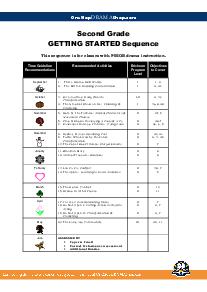2nd Grade Rubrics & Assessments
Frequency Rating Scale Informal Assessments Final Drama Assessment Performance Assessment 2nd Grade Rubrics 2nd Grade Rubrics in student language Measuring student achievement in drama requires a combination of written and performance-based assessment. On this page, there are a variety of tools (PDF downloads) for use throughout the school year to assess student learning and the effectiveness … Read more




